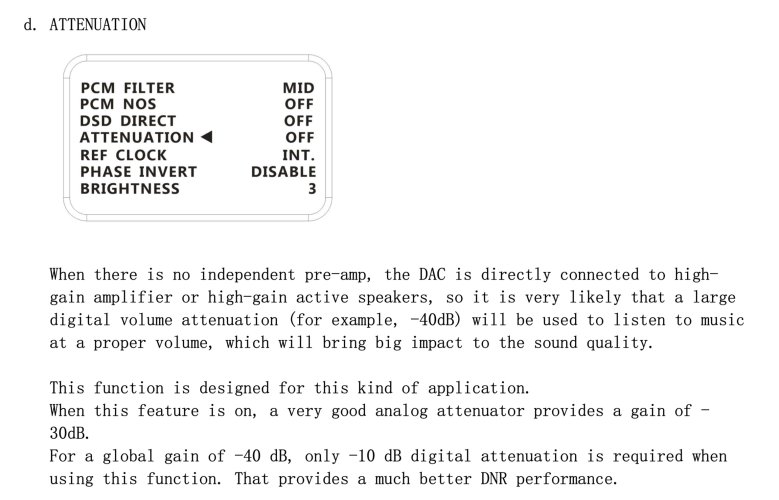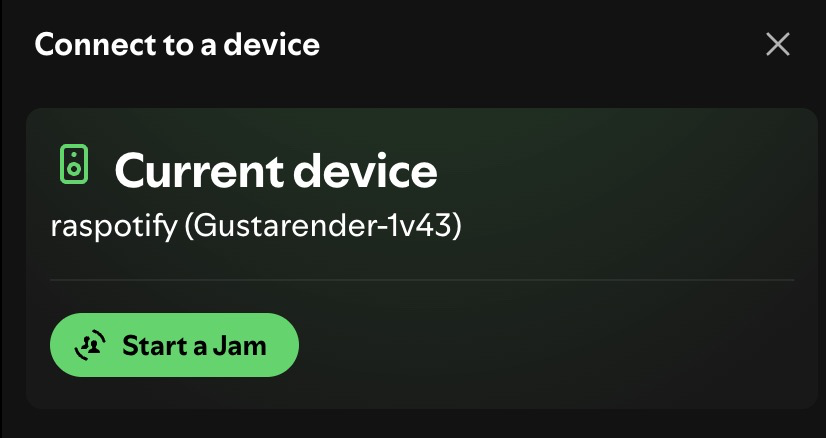I see HFM HEKSE in your profile. So, how's it sounding on R26 vs X26III, if you were comparing?I preferred the R26 to the Cyan2 and the similarly priced AKM chipped A26 for its deeper soundstage and faster transients especially when upsampled with HQPlayer. You should be able to find a used R26 or A26 for a good price. I have now switched to the new Gustard X26III for its incredible fine detail, lightening fast transients, and slam in the bass. Even if the soundstage depth is not quite as deep as the R26 but it makes the R26 sound slightly hazy.
I am also curious to try the new Denefrips Pontus 15.
Latest Thread Images
Featured Sponsor Listings
GUSTARD DAC-R26 Balanced Decoder R2R+1Bit Dual Native Decoding Music Bridge
- Thread starter m-i-c-k-e-y
- Start date
HiFiMan HE1000SE is the sweetspot for an endgame headphone. I also have the Ananda Nano but the HEKSE is much better. Better than anything I tried at 2 years of CanJam NYC up to and including Meze Elite, Audeze something, Sennheiser 860S?I see HFM HEKSE in your profile. So, how's it sounding on R26 vs X26III, if you were comparing?
The HE1000 unveiled is better yet but too expensive.
Yeah, so what suits better to HEKSE? Gustard R26 or X26III that you switched to?HiFiMan HE1000SE is the sweetspot for an endgame headphone. I also have the Ananda Nano but the HEKSE is much better. Better than anything I tried at 2 years of CanJam NYC up to and including Meze Elite, Audeze something, Sennheiser 860S?
The HE1000 unveiled is better yet but too expensive.
Yeah, so what suits better to HEKSE? Gustard R26 or X26III that you switched
I like the crisp transients and fine detail of the Gustard X26III. But a used R26 for $1,000 would be a good dealYeah, so what suits better to HEKSE? Gustard R26 or X26III that you switched to?
sbgk
100+ Head-Fier
- Joined
- Mar 25, 2013
- Posts
- 322
- Likes
- 161
iiwi review says Laiv micro dac is better than the R26
Which Rj45 cable from the R26 router do you use?
Any certified ethernet cable is usually fine but given the very small price difference for shielded ethernet cable it makes sense to get sheilded. Monoprice have plenty of shielded ethernet patch cables available on amazon. Get the shortest one you can use depending on how far your gear is from the router.Which Rj45 cable from the R26 router do you use?
leylandi
500+ Head-Fier
- Joined
- Apr 11, 2008
- Posts
- 641
- Likes
- 2,397
mango lassi
New Head-Fier
Hi everyone, I have put quite some effort into tuning my chain for better performance. I'm currently feeding it via Coaxial from a WiiM Pro, powered by a 5V linear PSU. Additionally, I've implemented grounding/NFC filters, high-quality coaxial cables, and mechanical isolation (ceramic feet + stone bases). These tweaks have already brought clear and immediate improvements, roughly 10% uplift in stage width, depth, and low-level detail — significantly more than I experienced with HQPlayer over NAA, which in my case only brought around 2% improvement.
I originally planned to go with a Volumio Rivo Plus, but switched to the WiiM Pro temporarily due to issues with the R26's LAN input (TIDAL SDK problems, NAA instability, etc.).
Now I'm considering adding a Digital-to-Digital Converter (DDC) to push things even further — specifically the Laiv Harmony µDDC, which supports Coax input and offers a programmable I²S output that should be compatible with the R26.
Has anyone here tried this combination? I'm curious whether the µDDC brings a meaningful uplift when used via Coax input and how well its I²S output integrates with the R26. Some reviewers are quite enthusiastic about it.
I originally planned to go with a Volumio Rivo Plus, but switched to the WiiM Pro temporarily due to issues with the R26's LAN input (TIDAL SDK problems, NAA instability, etc.).
Now I'm considering adding a Digital-to-Digital Converter (DDC) to push things even further — specifically the Laiv Harmony µDDC, which supports Coax input and offers a programmable I²S output that should be compatible with the R26.
Has anyone here tried this combination? I'm curious whether the µDDC brings a meaningful uplift when used via Coax input and how well its I²S output integrates with the R26. Some reviewers are quite enthusiastic about it.
kaufman
New Head-Fier
- Joined
- Dec 17, 2014
- Posts
- 12
- Likes
- 2
Sounds interesting. Please let us know if you get one and what improvements it makes. Especially interested to see if it is compatible with the R26 I2S input and what mode needs to be selected to get it to work.Hi everyone, I have put quite some effort into tuning my chain for better performance. I'm currently feeding it via Coaxial from a WiiM Pro, powered by a 5V linear PSU. Additionally, I've implemented grounding/NFC filters, high-quality coaxial cables, and mechanical isolation (ceramic feet + stone bases). These tweaks have already brought clear and immediate improvements, roughly 10% uplift in stage width, depth, and low-level detail — significantly more than I experienced with HQPlayer over NAA, which in my case only brought around 2% improvement.
I originally planned to go with a Volumio Rivo Plus, but switched to the WiiM Pro temporarily due to issues with the R26's LAN input (TIDAL SDK problems, NAA instability, etc.).
Now I'm considering adding a Digital-to-Digital Converter (DDC) to push things even further — specifically the Laiv Harmony µDDC, which supports Coax input and offers a programmable I²S output that should be compatible with the R26.
Has anyone here tried this combination? I'm curious whether the µDDC brings a meaningful uplift when used via Coax input and how well its I²S output integrates with the R26. Some reviewers are quite enthusiastic about it.
My R26 cannot get out of FIXED mode. I wnet into the menu, entered "Attenuation" choose "ON" , but still in Fixed mode, nomatter what.
Is ther a factory reset?
Please help!!!
Is ther a factory reset?
Please help!!!
Sounds like you have PCM NOS (and/or DSD Direct) set ON which bypasses the digital volume.
Attenuation refers to the one step analogue attenuation of 30dB, to use with high gain amps so your digital attenuation needed can be less. Suggest change this back to OFF as your baseline to experiment with digital volume, but do so with caution due to the 30dB difference between on & off.
Refer the manual for both.
Attenuation refers to the one step analogue attenuation of 30dB, to use with high gain amps so your digital attenuation needed can be less. Suggest change this back to OFF as your baseline to experiment with digital volume, but do so with caution due to the 30dB difference between on & off.
Refer the manual for both.
Thank you very much Jake2. I disabled PCM & DSD nos, changed Attenuation to ON and now it's working!! However, I never understand the menu: what is "one step analogue attenuation of 30dB"? also "For a global gain of -40 dB, only -10 dB digital attenuation is required whenSounds like you have PCM NOS (and/or DSD Direct) set ON which bypasses the digital volume.
Attenuation refers to the one step analogue attenuation of 30dB, to use with high gain amps so your digital attenuation needed can be less. Suggest change this back to OFF as your baseline to experiment with digital volume, but do so with caution due to the 30dB difference between on & off.
Refer the manual for both.
using this function. That provides a much better DNR performance" ??? The volume goes down to -60db in my unit.
Thanks again!!
Cool, glad to help.
The analogue attenuation is aimed at users with power amps and so no ability to adjust the amp volume in analogue domain (ie as you would via a preamp or integrated amp or headphone amp) so have to do it all via the DAC digital volume. If they find that comfortable listening levels are only with -40dB digital volume set on the R26 that will have a negative effect on sound with reduced dynamic range (DNR)* so better to do 30dB of the cut via the analogue attenuation setting, limiting the digital attenuation needed (to get to the same overall attenuation of -40dB) to 10dB which will sound better, no loss of DNR.
*DNR reduces perceptibly when there’s high attenuation like this due to the design of simple digital volume controls like the one in the R26 due to loss of bits. More sophisticated digital volume controls like those in software like Roon or HQplayer or as implemented in some DACs and streamers do additional processing to ensure there are bits to spare so DNR is not impacted. Google or search HF threads for digital vs analogue volume control for much discussion and debate on this topic!
The analogue attenuation is aimed at users with power amps and so no ability to adjust the amp volume in analogue domain (ie as you would via a preamp or integrated amp or headphone amp) so have to do it all via the DAC digital volume. If they find that comfortable listening levels are only with -40dB digital volume set on the R26 that will have a negative effect on sound with reduced dynamic range (DNR)* so better to do 30dB of the cut via the analogue attenuation setting, limiting the digital attenuation needed (to get to the same overall attenuation of -40dB) to 10dB which will sound better, no loss of DNR.
*DNR reduces perceptibly when there’s high attenuation like this due to the design of simple digital volume controls like the one in the R26 due to loss of bits. More sophisticated digital volume controls like those in software like Roon or HQplayer or as implemented in some DACs and streamers do additional processing to ensure there are bits to spare so DNR is not impacted. Google or search HF threads for digital vs analogue volume control for much discussion and debate on this topic!
Last edited:
Deleeh
Headphoneus Supremus
Depending on the design of the amplifier, it can also go so far that you can always adjust the volume within an audible range without blowing up the headphones or going deaf because it is constantly too loud.
In my tube amplifier, depending on the tubes, I can even limit this somewhat because the overall amplification of the tubes is too strong and can sometimes lead to clipping, which is also not good in the long term.
It's a nice feature and helpful from time to time.
In my tube amplifier, depending on the tubes, I can even limit this somewhat because the overall amplification of the tubes is too strong and can sometimes lead to clipping, which is also not good in the long term.
It's a nice feature and helpful from time to time.






















